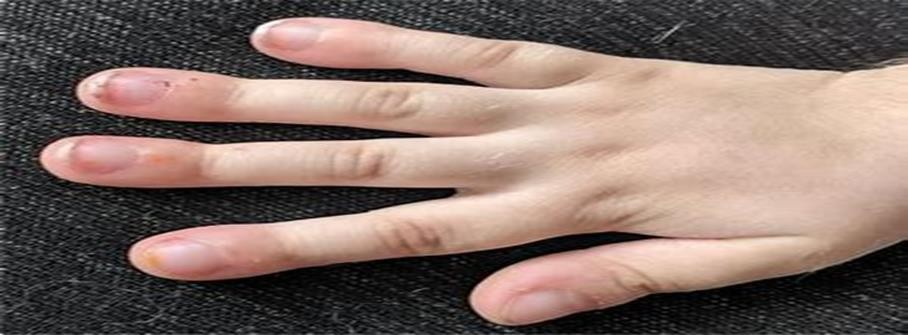The parent of a 1-year-old child with tetralogy of Fallot asks the nurse, "Why do my child's fingertips look like that?" On what understanding does the nurse base a response?
Clubbing occurs as a result of decreased cardiac output.
Clubbing occurs as a result of a left-to-right shunting of blood.
Clubbing occurs as a result of chronic hypoxia
Clubbing occurs as a result of untreated congestive heart failure.
The Correct Answer is C
C. Clubbing, characterized by bulbous enlargement of the fingertips and nail bed, is a result of chronic hypoxia in tetralogy of Fallot. In tetralogy of Fallot, there is a right-to-left shunting of blood due to the presence of a ventricular septal defect, overriding aorta, pulmonary stenosis, and right ventricular hypertrophy. This leads to reduced oxygenation of blood and chronic hypoxia, which can result in clubbing of the fingertips over time.

A This option is not the primary explanation for clubbing in tetralogy of Fallot. While decreased cardiac output may contribute to some manifestations of the condition, clubbing specifically results from chronic hypoxia rather than decreased cardiac output alone.
B Clubbing is not directly caused by a left-to-right shunting of blood. Instead, it is associated with chronic hypoxia, which can occur due to right-to-left shunting of blood in tetralogy of Fallot.
D Congestive heart failure may occur in individuals with tetralogy of Fallot but it is not the primary cause of clubbing. Clubbing in tetralogy of Fallot is primarily attributed to chronic hypoxia rather than heart failure alone.
Nursing Test Bank
Naxlex Comprehensive Predictor Exams
Related Questions
Correct Answer is A
Explanation
A. Ice pops are often recommended after tonsillectomy to help soothe the throat and provide hydration.
B.Although ice cream is cold and can soothe the throat, it is not the best option immediately after surgery. Dairy products, including ice cream, can sometimes lead to increased mucus production, which could irritate the throat and make swallowing more difficult during the healing process.
C. Offering hot tea is not recommended immediately following a tonsillectomy. Hot beverages, including tea, can increase the risk of bleeding and discomfort at the surgical site.
D. Cranberry juice is not an appropriate choice immediately post-tonsillectomy. While hydration is essential for recovery, acidic or tart beverages like cranberry juice may irritate the surgical site and increase discomfort.
Correct Answer is D
Explanation
D. The correct action would be to place the client on NPO (Nothing by Mouth) status, option D. This is because a decreased level of consciousness can increase the risk of aspiration.
A. Liver biopsy is not indicated for suspected meningitis with a decreased level of consciousness. Liver biopsy is a procedure used to obtain a sample of liver tissue for diagnostic purposes, typically to evaluate liver function or diagnose liver diseases.
B. A protective environment (option B) is more related to immunocompromised patients. In the case of decreased level of consciousness, preventing aspiration is key.
C. Dorsal recumbent position refers to lying on the back with the knees flexed. While this position may be suitable for certain medical procedures or examinations, it is not specifically indicated for a client with suspected meningitis and a decreased level of consciousness.
Whether you are a student looking to ace your exams or a practicing nurse seeking to enhance your expertise , our nursing education contents will empower you with the confidence and competence to make a difference in the lives of patients and become a respected leader in the healthcare field.
Visit Naxlex, invest in your future and unlock endless possibilities with our unparalleled nursing education contents today
Report Wrong Answer on the Current Question
Do you disagree with the answer? If yes, what is your expected answer? Explain.
Kindly be descriptive with the issue you are facing.
